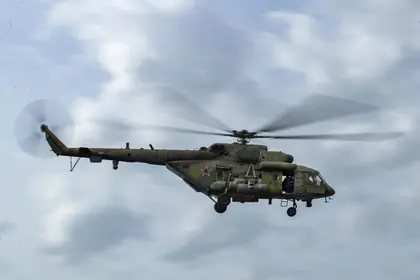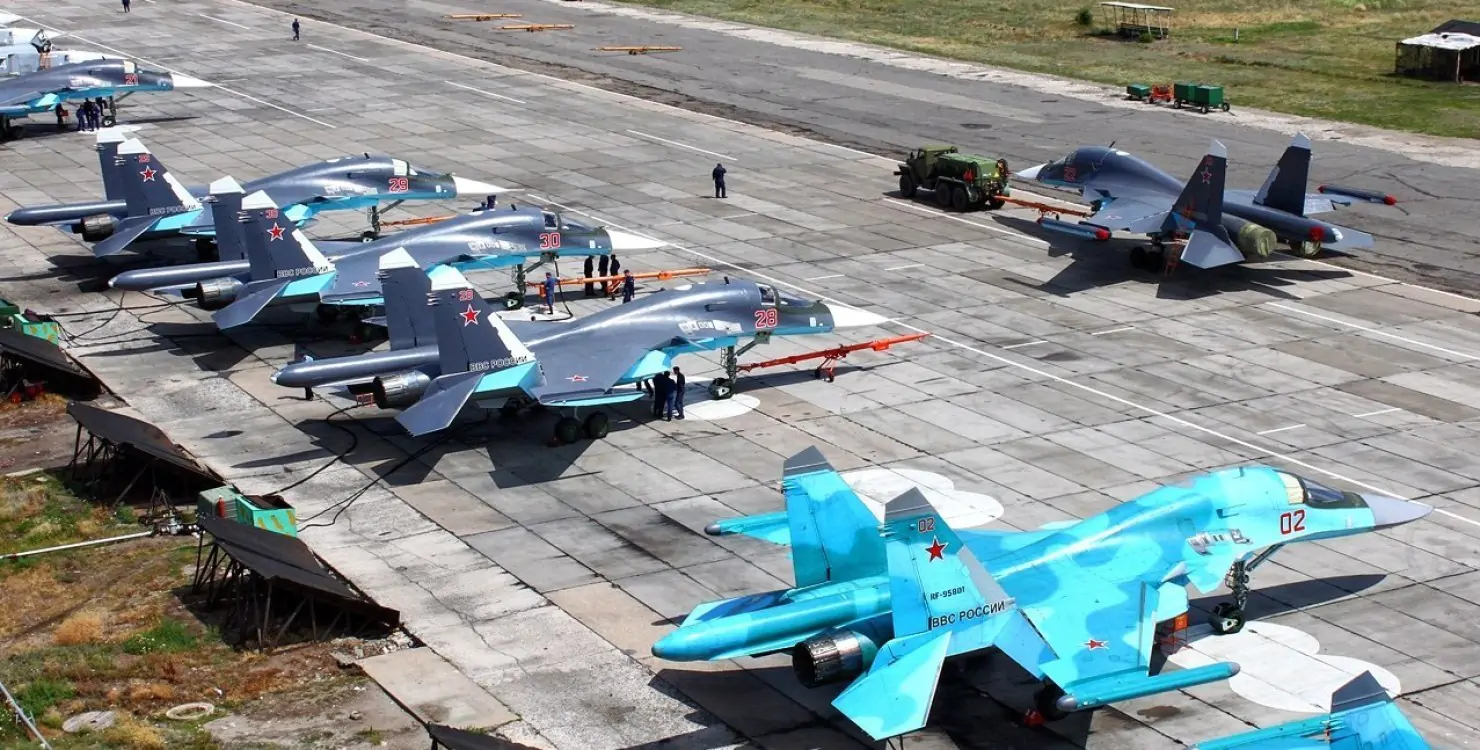A recent Ukrainian ambush of four high-end combat aircraft above western Russia exposed more gaps between Moscow rhetoric and actual battlefield conditions, in the Kremlin’s worst single-day air defeat in more than a year.
On May 13 Russian military air traffic controllers saw two Mi-8 helicopters, a Su-34 strike jet, and an Su-35 fighter jet disappear off their radars, according to subsequent reports falling victim to weapons fired into the airspace above Russia’s western Bryansk Oblast from Ukraine. Everyone aboard, totaling nine air crew, died in the shoot-downs, the Russian government news agency TASS reported.
- Read the newest war in ukraine update in the Kyiv Post’s daily news coverage for today.
- Look at the latest Ukraine news that was released today.
JOIN US ON TELEGRAM
Follow our coverage of the war on the @Kyivpost_official.
The Russian military portal Baza estimated the cost of the May 13 morning losses to the Russian state at $3.4-7.8 million dollars per individual pilot, $19.41 million for the Su-34, $25.87 million for the Su-35, and between $3 million and $20 million for each helicopter. Training new pilots to replace the ones killed will take between three and seven years, the Baza report said.
Ukrainian government spokesmen confirmed the Russian losses but, as has often been the case when the Ukrainian military has hit targets outside land or air space belonging to Ukraine, avoided spelling out that it was Armed Forces of Ukraine (AFU) units responsible for the attacks.
AFU Colonel Yuriy Ihnat in comments on May 15 to Ukrainian media said that the Russian jets and helicopters “experienced some trouble” and were destroyed en route while on an attack mission against Ukraine’s northern Chernihiv region. He declined to offer details.

Russia, Ukraine Exchange Over 300 POWs Ahead of New Year’s Eve
Close up of downed Mi-8 in Bryansk. Together with Su-35 and Su-34 this is huge and most painful loss for Russian Aerospace Forces and many lives saved for Ukrainians pic.twitter.com/L7mlORVMKw
— Maria Avdeeva (@maria_avdv) May 13, 2023
In the hours following the crashes, Russian civilian social media – despite strict government rules supposedly banning the placement of most military-related content on the internet by private citizens – was swamped with video, photographs and from-the-ground accounts of a missile smacking and setting ablaze a helicopter above a village named Klintsy, another helicopter downed in a rural region in the nearby Unecha district, Su-34 debris burning fiercely on the ground on the edge of a forest in the Starodub region, and the Su-35 pouring smoke and falling out of control above the village Suretsky Muravei.
Early Russian official statements on May 13 claimed the helicopter near Klintsy, had a critical engine failure. The local Russian civilian internet contradicted that official narrative almost instantaneously, publishing photographs of pieces of an Mi-8 helicopter fuselage struck through with missile fragments, some big enough to put one’s fist through.
International air war analysts generally confirmed Ihnat’s account that probably a Russian strike element en route to Ukraine had been intercepted, pointing to confirmed Russian reports that one of the helicopters shot down was an Mi-8MTPR, an aircraft loaded with electronics specifically designed to jam and spoof air defense radars, including homing radars carried by anti-aircraft missiles aimed at Russian jets or helicopters.
“What is known by now is that one of downed Mi-8s was no ‘vanilla’ version, but a Mi-8MTPR: an electronic warfare variant, only some 20 of which are in service,” wrote air war analyst Tom Cooper in an evaluation the following day.
Most reports said the protection Mi-8MTPR helicopter was shot down first as it – unsuccessfully – led the two jets and attempted to jam missiles aimed their way. Reportedly, after a Ukrainian missile or missiles took out the helicopter, Ukrainian gunners turned their radars onto the Su-34 and Su-35 to shoot them down next. When the Russians sent an Mi-8 search and rescue helicopter sent to search for the lost air crew, according to most accounts, the AFU destroyed it as well.
Russian observers generally agreed that Ukrainian anti-aircraft missiles fired from the ground were probably behind the shoot-downs. Boris Rozhin, a “military correspondent” closely linked to the Kremlin, in a May 14 Telegram post said: “The shots were fired from the border area of the [Ukraine’s] Chernihiv region. Those responsibility for [Russian] border security… were asleep, and as a result our aircraft flew into an ambush not expecting to be fired on by the enemy.”
All four shoot-down locations are upwards of 40 kilometers inside Russia from Ukraine’s northern border – a difficult but not impossible shot for Ukrainian crews deployed to the far north of the Chernihiv region and operating Norwegian-US NASAMS anti-aircraft missiles, the Russia-associated Donbass Today (DT) information platform reported. The maximum range of NASAMS according to open sources is 50 kilometers, making the four shoot-down sites theoretically within reach of the missile, were AFU operators to have set it up very near the Russian border.
First delivered to Ukraine in November 2022, the Norway- and US-developed NASAMS (Norwegian Advanced Surface-to-Air Missile System) is an anti-aircraft system that fires a modified version of America’s best air-to-air missile, called an AMRAAM, from a ground launcher. Ukraine’s military has praised the semi-mobile launch system and tracking radars (all carried on flatbed trucks and taking several hours to set up or rig for transport) as highly effective, with a 100 percent kill rate.
When NASAMS delivery to Ukraine was announced, official Russian information platforms argued the system wasn’t going to be very effective and in any case the Ukrainians would only use it defensively. A November 22 article published by Russia’s national news agency TASS quoted a “military expert” predicting the AFU would deploy the missile passively, to protect senior government officials and office buildings.
Chances that the AFU decided not to use NASAMS the way TASS had predicted, and that the US-Norwegian system was the weapon that destroyed the Russian aircraft on May 13 (Russian air force anti-missile jamming helicopter notwithstanding) are “at least 95 percent,” the DT article said.
Asked whether Ukraine’s military was responsible for the quadruple shootdowns, Mykhailo Podalyak, a senior advisor to President Volodymyr Zelensky, avoided admitting Kyiv’s responsibility, but at the same time suggested that even as the Kremlin continues in official statements to pretend the war in Ukraine is not a war, May 13 was not the last time residents of Russia’s Bryansk region would see Russian military aircraft knocked out of the sky, no matter what Moscow may say.
“And when they (residents of Bryansk) say ‘How is this possible? Above Bryansk Oblast? They (the AFU) are shooting down our airplanes!’ I respond this way: ‘You don’t have any war over there where you are, so what you have is negative air defenses,” Podolyak said.
“And it’s only going to get worse, and the shoot-downs are only going to become more intensive. This is obvious,” he said.
You can also highlight the text and press Ctrl + Enter






